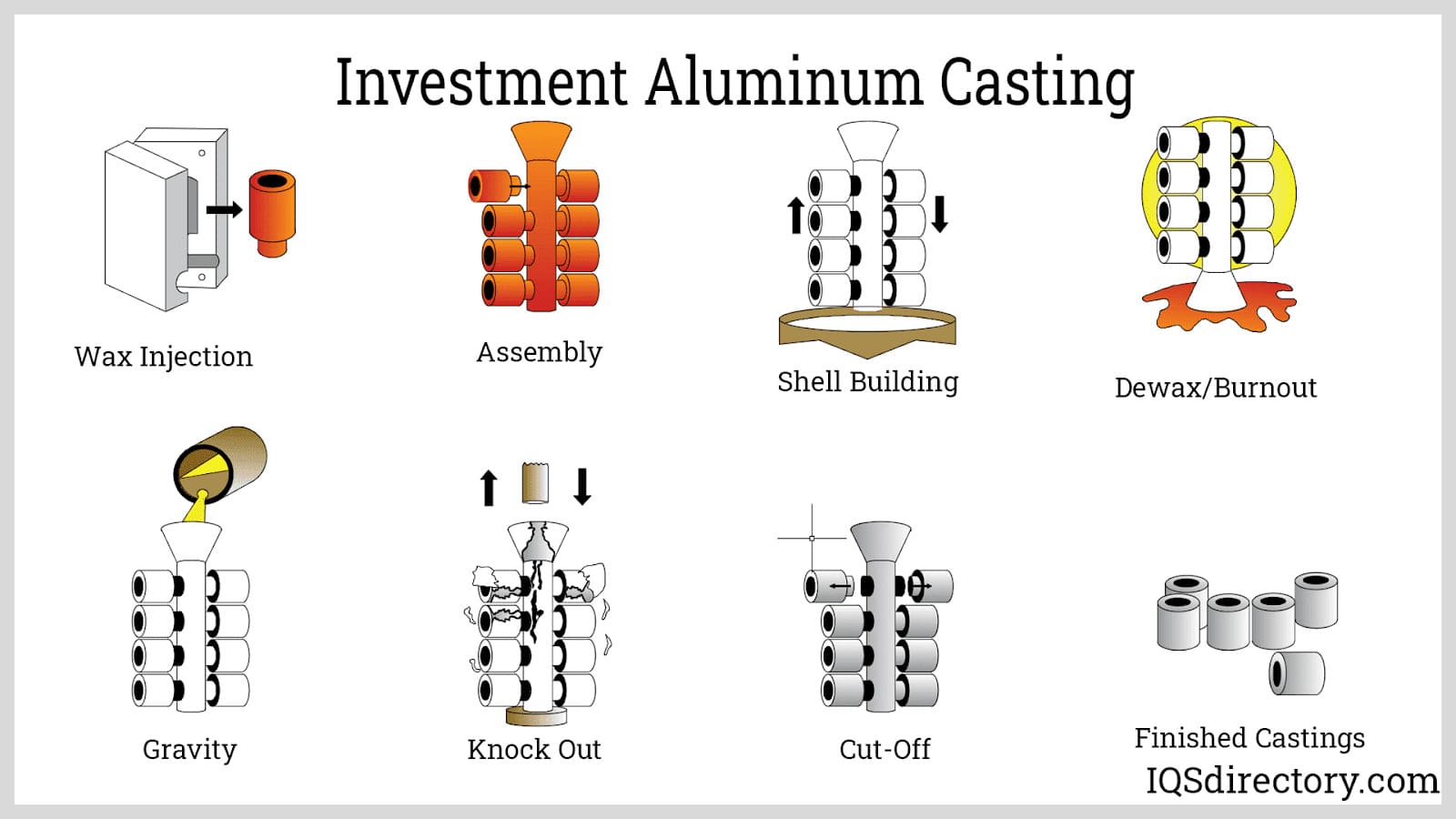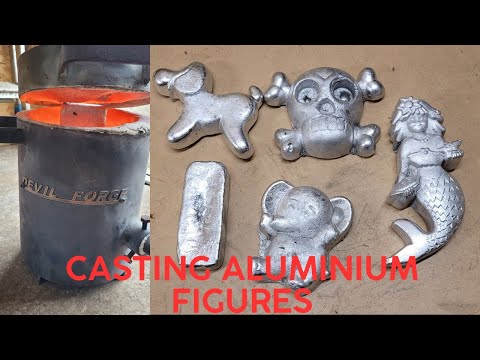7 Easy Facts About Stahl Specialty Company Explained
7 Easy Facts About Stahl Specialty Company Explained
Blog Article
The 6-Second Trick For Stahl Specialty Company
Table of ContentsSome Ideas on Stahl Specialty Company You Need To Know6 Easy Facts About Stahl Specialty Company ExplainedNot known Details About Stahl Specialty Company The 5-Second Trick For Stahl Specialty CompanyThe 8-Minute Rule for Stahl Specialty CompanyGetting My Stahl Specialty Company To Work

If you're creating a steel product, you've likely thought about making use of light weight aluminum as the base material. Pure aluminum has restricted applications, so it is usually combined with other aspects, such as silicon, magnesium, and manganese to create alloys.
Various elements and amounts create a wide range of desirable physical and chemical residential properties. And the Light weight aluminum Organization (AA), based in North America, has created specs that control aluminum alloys' structure, buildings, and nomenclature. There are two types of light weight aluminum alloys functioned and cast. Shop employees create these alloy types in various means, which significantly impacts their qualities.
6 Easy Facts About Stahl Specialty Company Shown
Cast light weight aluminum alloys are made by melting pure light weight aluminum and combining it with other steels while in fluid type. The mix is put right into a sand, die, or investment mold and mildew.

160.0 represents a cast with a minimum of 99.60% aluminum. The fourth digit, which comes after the decimal factor, specifies if the alloy is a casting (xxx. 0) or an ingot (xxx. 1). Wrought aluminum alloys additionally start by combining molten aluminum with other steels. In comparison to cast alloys, nevertheless, they are developed into their final form through processes such as extrusion, rolling, and flexing after the metal has strengthened right into billets or ingots.
There are several small differences between functioned and cast light weight aluminum alloys, such as that cast alloys can contain extra substantial amounts of other steels than wrought alloys. The most noteworthy difference in between these alloys is the fabrication procedure with which they will certainly go to provide the final item. In addition to some surface treatments, cast alloys will certainly exit their mold and mildew in nearly the exact strong type desired, whereas functioned alloys will certainly undergo numerous alterations while in their solid state.
If you believe that a wrought alloy might be the very best for your task, have a look at a few of our articles that clarify more concerning particular functioned alloys, such as Alloy 6061 and Alloy 6063. On the other hand, if you believe an actors alloy would be much better for you, you can find out more about some actors alloys in our Alloy 380 and Alloy 383 articles (coming soon).
The Definitive Guide to Stahl Specialty Company
When choosing a light weight aluminum foundry for your manufacturing demands, it's important to research numerous factors. Among one of the most crucial facets to consider is the experience and skills of the shop. Foundry near me. Picking a foundry that has the appropriate knowledge of the aluminum casting procedure, and the profile to reveal for it, helps to have a successful result for your project
Having the experience and market expertise to engineer your spreadings for ideal production and top quality outcomes will certainly improve the task. Making light weight aluminum castings needs a complex set of procedures to attain the appropriate outcomes. When choosing a brand-new light weight aluminum shop to companion with, ensure they have comprehensive industry experience and are educated concerning all elements of the aluminum casting procedure: layout, production, material evaluation, and product testing.
The shop needs to likewise have a proven track document of supplying remarkable items that satisfy or exceed consumer assumptions. Quality control needs to likewise be at the top of your checklist when selecting an aluminum shop. By functioning with a qualified shop who adheres to the requirements for quality assurance, you can shield the stability of your product and ensure it fulfills your specs.
By choosing a firm who uses solutions that meet or surpass your item requirements, you can be sure that your task will be completed with the utmost accuracy and efficiency. Various components call for different production strategies to cast light weight aluminum, such as sand spreading or die spreading.
Rumored Buzz on Stahl Specialty Company
Die spreading is the name provided to the procedure of creating complex metal elements with usage of mold and mildews of the part, also referred to as passes away. The process uses non-ferrous metals which do not contain iron, such as aluminum, zinc and magnesium, due to the desirable properties of the steels such as reduced weight, higher conductivity, non-magnetic conductivity and resistance to corrosion.
Pass away spreading production is quick, making high manufacturing levels of elements simple. It creates more parts than any kind of various other procedure, with a high level of accuracy and repeatability. To find out more regarding die casting and die casting materials made use of at the same time, kept reading. There are three sub-processes that fall under the group of die spreading: gravity die casting (or irreversible mold casting), low-pressure die casting and high-pressure die casting.
Regardless of the sub-process, the die casting procedure can be damaged down into six steps. After the purity of the alloy is checked, passes away are developed. To prepare the craves casting, it is very important that the passes away are clean, to ensure that no deposit from previous manufacturings continue to be. After cleansing, the ejection lubrication is related to the die to make sure a smooth release.
Little Known Questions About Stahl Specialty Company.
The pure steel, additionally referred to as ingot, is contributed to the heating system and kept at the molten temperature of the metal, which is after that moved to the shot chamber and infused into the die. The pressure is then preserved as the metal solidifies. As soon as the metal strengthens, the cooling procedure begins.
(https://yoomark.com/content/httpsstahlspecialtycom-0)
The thicker the wall surface of the part, the longer the cooling time as a result of the quantity of indoor metal that likewise needs to cool down. After the component is totally cooled down, the die cuts in half open and an ejection device pushes the component out. Following the ejection, the die is closed for the next injection cycle.
The flash is the additional try here material that is cast throughout the process. Deburring removes the smaller sized items, called burrs, after the cutting process.
The Ultimate Guide To Stahl Specialty Company

Zinc is one of the most used alloys for die casting due to its lower cost of raw materials. Its corrosion resistance also allows the components to be long lasting, and it is one of the much more castable alloys due to its lower melting point.
As discussed, this alloy is one of the most typically used, yet manufactures will, at times, pick light weight aluminum over zinc as a result of light weight aluminum's production advantages. Aluminum is highly economical and among the extra functional alloys. Light weight aluminum is utilized for a number of different items and sectors anything from home window frames to aerospace materials.
Report this page